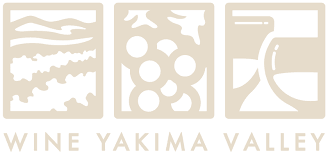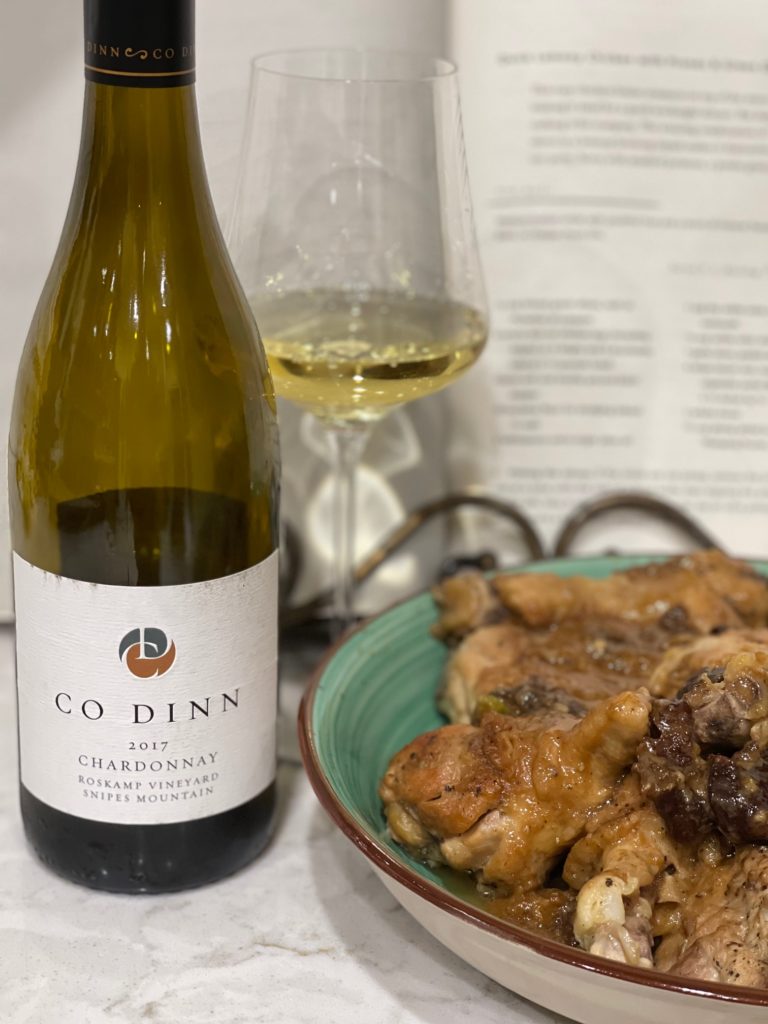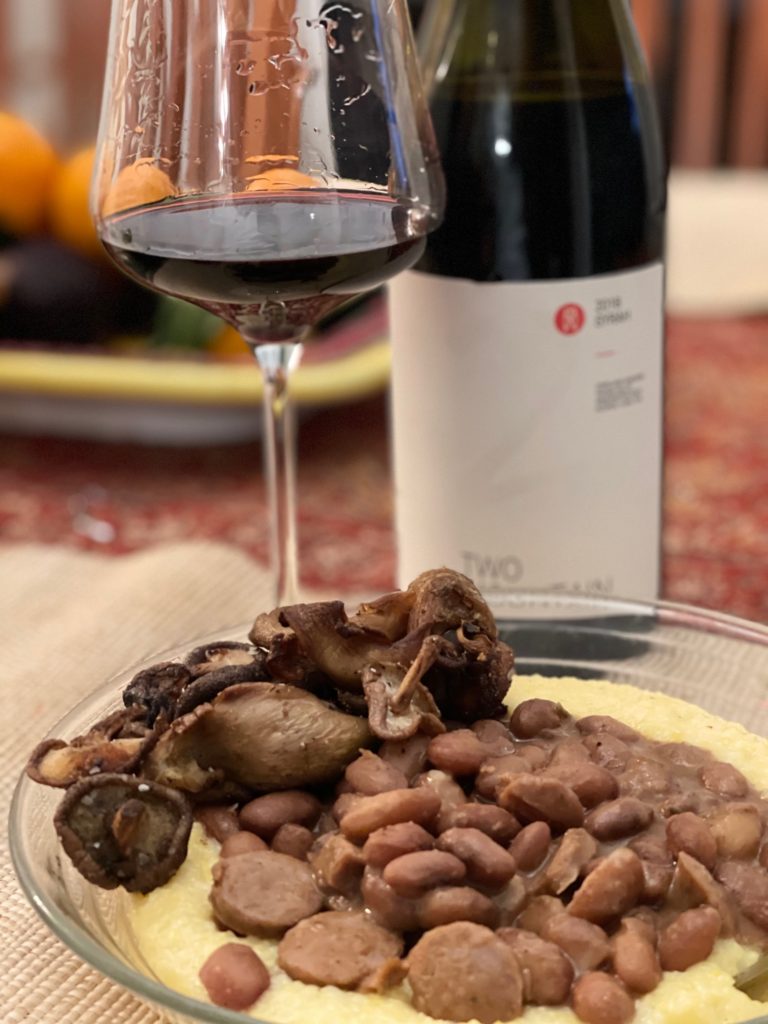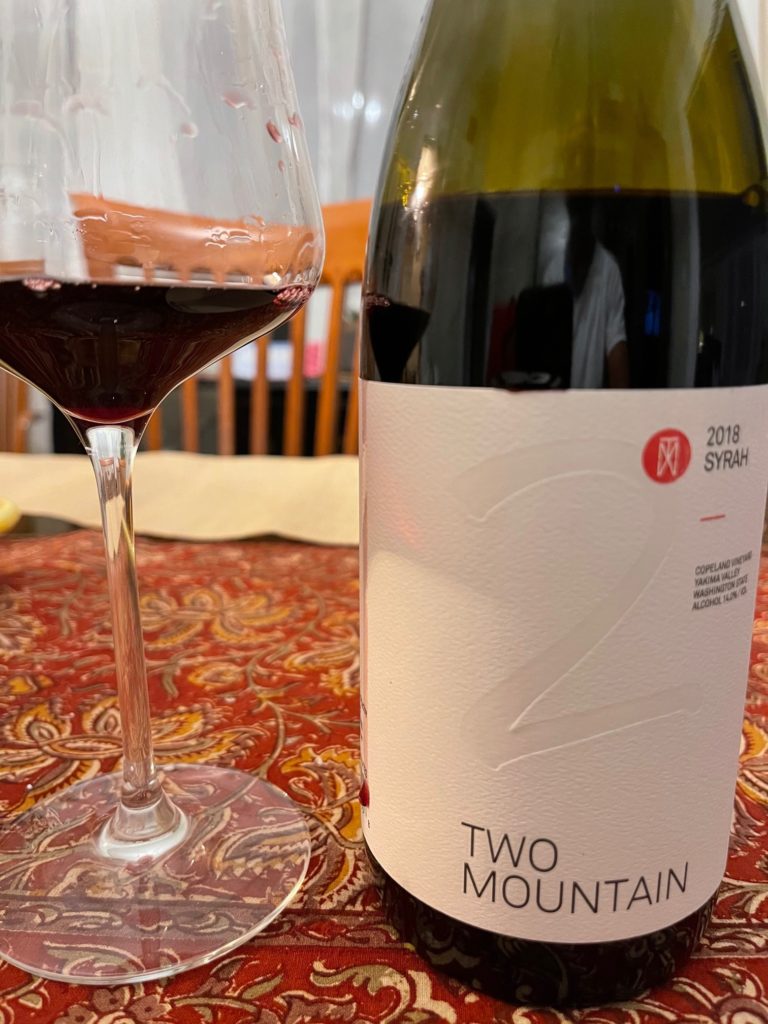To put it another way, the largest concentration of the most famous vineyards in the Pacific Northwest are found right here
Yakima Valley Wine
This month, the Wine Pairing Weekend group of bloggers are partnering with Wine Yakima Valley.

About Yakima Valley Wine
The Yakima Valley is located in south-central Washington State. This eponymous AVA was established in 1983. It was the first AVA in north of California. It predates the larger and arguably more well known Columbia Valley AVA , which it is a part of.
The AVA’s boundaries follow the valley of the Yakima River for 60 miles (100km) from the Union Gap just south of the city of Yakima to the river’s convergence with the larger Columbia River. The Rattlesnake Hills mark the northern boundary of the AVA, and the Horse Heaven Hills (home to the separate Horse Heaven Hills AVA) run along the southern edge of the zone. The Cascade Mountains, where the Yakima River rises, can be found to the west of the region. (Source)
Yakima Valley has a long history of grape-growing with the first vineyards planted in the 1860s by French settlers. The industry here steadily grew throughout the 20th Century, and in the 1930s, a viticultural research center was set up near Prosser by Dr. Walter Clore to explore the suitability of Washington’s terroir for Vitis vinifera grape varieties. This research formed the basis of the Washington wine industry, leading to a huge boom in plantings in the 1970s and 1980s. (Source)
As seen in the map below, the area is composed of 4 distinct wine communities, Yakima, Zillah, Prosser and Red Mountain.

Yakima Valley Wine at a glance:
Area under vine: 17,000 acres; the source of more than 50% of wine production in Washington State!
Climate: An arid continental climate, with annual average precipitation at just 8 inches of rain (irrigation required).It is the coolest growing region in the Columbia Valley AVA
Top 5 Grape Varieties: Chardonnay, Merlot, Cabernet Sauvignon, Riesling and Syrah (in descending order of acres planted)
Sub AVAs:
- Red Mountain est. 2001
- Rattlesnake Hills est. 2006
- Snipes Mountain est. 2009
- Candy Mountain est. 2020
Soils: Moderate to deep silt-loam is layered over gravel or directly onto basalt bedrock. This foundation creates well-drained soils that are ideal for viticulture.
I must confess I knew little about Yakima Valley Wine. Ironically, I was familiar with the Red Mountain AVA from a trip to Seattle a few years ago, when we visited Woodinville “Wine Country”. I recall several of my favorite wines being from the Red Mountain AVA, but until now, I’d associated it the Columbia Valley AVA.
Now, I know better, and to paraphrase the immortal Maya Angelou…”when you know better, do better”
I’ll be looking for Yakima Valley wines!
Disclosure: This is a sponsored post written by me in conjunction with the March #WinePW Yakima Valley wines event. These wines were provided to me as a media samples. I received no compensation for this post, and all opinions presented are my own
The Wines and Pairings
2017 Co Dinn Chardonnay Roskamp Vineyard
Coman Dinn, the Owner/Winemaker of Co Dinn Cellars moved from Texas to California in 1989 to pursue his master’s degree in Food Science, Enology at UC Davis. After graduating, he worked in the Napa Valley for a few years before making a trip to Washington State in 1996.
“In 1996, I came to Washington and tried the wines, they knocked my socks off. I realized there was tremendous potential here and I wanted to be part of it.” explains Dinn.
He focuses exclusively on single (preferably hillside) vineyard wines from the Yakima Valley. His winery is located in the old city of Sunnyside water department. The 1930s building has been remodeled in an industrial deco design with beautiful brick. The building still houses the city’s original wells, located beneath the floor.
Fruit for this wine is sourced from the Roskamp vineyard in the Snipes Mountain AVA. It is situated atop a gravelly ridge which drops almost 400 feet down on either side, creating an island vineyard in the sky in the middle of the Yakima Valley. The vineyard is on a steep northwest facing slope,and planted on very deep, well drained basalt gravel soils formed in alluvium. It was planted to Dijon Clones 76 and 96 in 1998: The wine is barrel fermented in 25% new and older French Burgundy barrels. Aged sur lie for 17 months, the wine is bottled unfiltered.

My tasting notes follow:
Pale yellow color with inviting baked pear, Meyer lemon custard, pastry dough, vanilla, and baking spice aromas. On the palate it’s full bodied, and rich with good acidity and baked pear, and yellow apple, Meyer lemon custard, vanilla, and baking spice flavors with a very satisfying finish. 14.4% abv|SRP – $45
The wine paired well with Quick Lemony Chicken with Prunes and Green Olives. The wines lemony character and full body was good match for the dish.
2018 Two Mountain Winery Syrah
Two Mountain Winery is a family owned and operated vineyard and winery located in Zillah Wine Community. Brothers Matthew and Patrick Rawn are fourth generation farmers. In 2000, when the brothers were still “the help” their family made the decision to add a vineyard and winery to their storied farming portfolio What was once Schmidt Orchards, planted by their grandfather, Phil Schmidt in 1951, became Copeland Vineyard that they planted with our uncle, Ron Schmidt, in 2000. In 2006, the brothers purchased it from our family in 2006.
Matthew is the Winemaker and Director of Sales and Marketing. Patrick owns Vineyard Operations. Their wines are 100% estate grown produced and bottled. Their vineyards are third party certified sustainable under the Lodi Rules for Sustainable Winegrowing.
The name for the Two Mountain Winery was inspired by the majestic views of Mt. Adams and Mt. Rainier, which serve as the backdrop of the Copeland Vineyard.
This wine is a blend of 98% Syrah, 2% Petite Sirah from the sustainably farmed Copeland Vineyard. It was raised in 15% new French oak puncheons and 85% two to three year old French oak. Note:
My tasting notes follow:
Opaque violet color with very appealing dark fruit jam, white pepper, dried herb, leather, coffee, dried earth aromas with a kiss of florality. On the palate it’s medium-bodied, fresh and delicious with fine-grained tannins and ripe blueberry, boysenberry, blackberry, dried fig, and vanilla flavors with a medium plus mineral-driven finish. 14% abv|SRP – $25
The wine was wonderful paired with Borlotti Beans in Garlic and Olive Oil with Lamb Merguez Sausage on bed of polenta with a side of Wild Roasted Mushrooms!
There were two alluring wines, I thoroughly enjoyed and would recommend to friends!
Looking for more Yakima Valley Wine and food pairing inspiration? Please have a looks at what my fellow Wine Pairing Weekender have in their glasses, and on their plates!
- Camilla of Culinary Adventures with Camilla doubles up with Yakima Valley’s Sin Banderas Rhone Roses Compliment Dishes with Asian Flair and Mediterranean-Inspired Dishes Paired with Yakima Valley Wines from Dineen Vineyards.
- Linda at My Full Wine Glass invites us to Meet Kerry Shiels: A Yakima Valley winemaker with Vision.
- Terri of Our Good Life shares two posts: Fortuity…Taking Advantage of Life’s Great Wines! and Two Mountain Rose and Fennel Wild Mushroom Tarts.
- Payal at Keep The Peas declares Yakima Valley Wines FTW!
- Wendy of A Day in the Life on the Farm matches Smoked Beef Brisket with Canvasback Cabernet.
- Rupal the Syrah Queen offers Yakima Valley – Red Willow Vineyards Producing Some of Washington’s Finest Syrahs.
- Jane of Always Ravenous makes our mouths water with Filet Mignon paired with Washington Yakima Valley Cabernet Sauvignon.
- Martin with ENOFYLZ Wine Blog gives us A Taste of Washington State’s Yakima Valley.
- David at Cooking Chat has two posts for us also with Lamb Ragu Pasta with Red Wine from Dineen Vineyards and Sin Banderas Rosé with Corned Beef & More Yakima Valley Wine Pairings.
- Nicole of Somm’s Table shares Big, Beautiful Reds from Yakima Valley and Tasty, Meaty Fare.
- Jennifer at Vino Travels tells us about Italian Grapes of the Yakima Valley with Sleeping Dog Wines.
- Gwendolyn the Wine Predator explores Washington Syrah: Hedges, L’Ecole, VanArnam with Lamb Stew.
- Susannah at Avvinare pours Malbec from VanArnam Vineyard in Yakima Valley.
- Lori at Exploring the Wine Glass shares Tasting the Soul of Wine in the Heart of Yakima Valley.
- Robin at Crushed Grape Chronicles writes Yakima Valley AVA – Blends of friendship and history with wines from Eight Bells and Pearl and Stone Co.
You’re welcome to join the conversation on Saturday, March 13th on Twitter to discuss the wines of this amazing region. Just follow and use the hashtag #WinePW at 8 am PST or 11 am EST.


That Two Mountain is gorgeous! And your pairings are always so appealing. Thanks for sharing. Can’t wait to track down some bottles on my own.
I can imagine Yakima would be an exciting place for Coman Dinn to apply his winemaking skills…great potential when he first visited that is really coming into its own now!
interesting pairing. I have to try that it sounds wonderful.
Both of these pairings sound lovely, but all about the Meguez sausage w beans, mushrooms, and polenta. That just sounds awesome!
After tasting the Cote Bonneville Chardonnay, I’d love to try the Co Dinn. Looks like the two wineries are neighbors. Must get there soon!
Co is quite a guy and if you ever chat with him you’ll find that he does deep dives into every aspect of wine. I love that – and the single vineyard approach.
Love your pairings and wine descriptors with quotations from Maya Angelou, great post Martin. Cheers.
Thanks for the kind words Susannah it was a fun exploration.